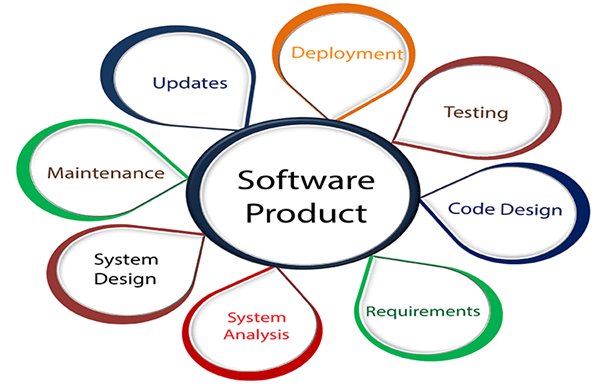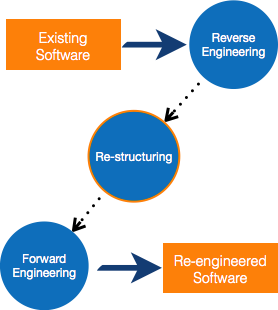A software life cycle model (also termed process model) is a pictorial and diagrammatic representation of the software life cycle. A life cycle model represents all the methods required to make a software product transit through its life cycle stages. It also captures the structure in which these methods are to be undertaken.

Software Engineering Tutorial - Software engineering is an engineering branch associated with development of software product using well-defined scientific principles, methods and procedures.
In other words, a life cycle model maps the various activities performed on a software product from its inception to retirement. Different life cycle models may plan the necessary development activities to phases in different ways. Thus, no element which life cycle model is followed, the essential activities are contained in all life cycle models though the action may be carried out in distinct orders in different life cycle models. During any life cycle stage, more than one activity may also be carried out.
Need of SDLC
The development team must determine a suitable life cycle model for a particular plan and then observe to it.
Without using an exact life cycle model, the development of a software product would not be in a systematic and disciplined manner. When a team is developing a software product, there must be a clear understanding among team representative about when and what to do. Otherwise, it would point to chaos and project failure. This problem can be defined by using an example. Suppose a software development issue is divided into various parts and the parts are assigned to the team members. From then on, suppose the team representative is allowed the freedom to develop the roles assigned to them in whatever way they like. It is possible that one representative might start writing the code for his part, another might choose to prepare the test documents first, and some other engineer might begin with the design phase of the roles assigned to him. This would be one of the perfect methods for project failure.

A software life cycle model describes entry and exit criteria for each phase. A phase can begin only if its stage-entry criteria have been fulfilled. So without a software life cycle model, the entry and exit criteria for a stage cannot be recognized. Without software life cycle models, it becomes tough for software project managers to monitor the progress of the project.
SDLC Cycle
SDLC Cycle represents the process of developing software. SDLC framework includes the following steps:

The stages of SDLC are as follows:
Stage1: Planning and requirement analysis
Requirement Analysis is the most important and necessary stage in SDLC.
The senior members of the team perform it with inputs from all the stakeholders and domain experts or SMEs in the industry.
Planning for the quality assurance requirements and identifications of the risks associated with the projects is also done at this stage.
Business analyst and Project organizer set up a meeting with the client to gather all the data like what the customer wants to build, who will be the end user, what is the objective of the product. Before creating a product, a core understanding or knowledge of the product is very necessary.
For Example, A client wants to have an application which concerns money transactions. In this method, the requirement has to be precise like what kind of operations will be done, how it will be done, in which currency it will be done, etc.
Once the required function is done, an analysis is complete with auditing the feasibility of the growth of a product. In case of any ambiguity, a signal is set up for further discussion.
Once the requirement is understood, the SRS (Software Requirement Specification) document is created. The developers should thoroughly follow this document and also should be reviewed by the customer for future reference.
Stage2: Defining Requirements
Once the requirement analysis is done, the next stage is to certainly represent and document the software requirements and get them accepted from the project stakeholders.
This is accomplished through 'SRS'- Software Requirement Specification document which contains all the product requirements to be constructed and developed during the project life cycle.
Stage3: Designing the Software
The next phase is about to bring down all the knowledge of requirements, analysis, and design of the software project. This phase is the product of the last two, like inputs from the customer and requirement gathering.
Stage4: Developing the project
In this phase of SDLC, the actual development begins, and the programming is built. The implementation of design begins concerning writing code. Developers have to follow the coding guidelines described by their management and programming tools like compilers, interpreters, debuggers, etc. are used to develop and implement the code.
Stage5: Testing
After the code is generated, it is tested against the requirements to make sure that the products are solving the needs addressed and gathered during the requirements stage.
During this stage, unit testing, integration testing, system testing, acceptance testing are done.
Stage6: Deployment
Once the software is certified, and no bugs or errors are stated, then it is deployed.
Then based on the assessment, the software may be released as it is or with suggested enhancement in the object segment.
After the software is deployed, then its maintenance begins.
Stage7: Maintenance
Once when the client starts using the developed systems, then the real issues come up and requirements to be solved from time to time.
This procedure where the care is taken for the developed product is known as maintenance.
Earn a degree in computer science or a related field. Most software engineer positions require a bachelor's degree.
What Is Software Engineering Pdf
[1]Software Engineering For Beginners
Majoring in computer science will provide the most useful background for designing and perfecting software. Most often, interviewers will ask questions focusing on data structures and algorithms, so the theoretical background provided by traditional computer science degrees best prepares you for this. However, you will likely need to spend considerable time outside of the classroom writing software to learn how the theoretical concepts you're taught can apply in the practice of writing real software.Software Engineering Tutorials Point Videos
- It is possible to get hired with an associate's degree or even with nothing but self-taught experience. Pursuing this route, you should have a strong collection of completed and functional projects demonstrating your skills on a website like Github. You can also pursue open source projects to contribute fixes and new features to in case you don't have a concept of your own. Open source means that the code (source) for a piece of software is publicly viewable (open). Often, this allows anyone to submit code to a project, pending approval of the project maintainers. Finding an open source project with a welcoming community of developers can greatly accelerate your skills after you've established a baseline skillset.